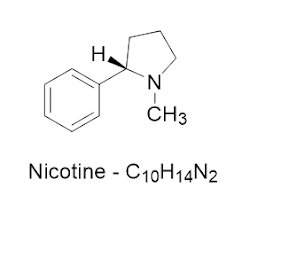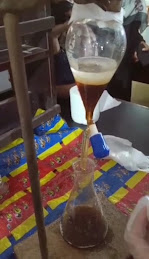"Synthesis
of Paracetamol by using p-amino phenol"
Theory:
Paracetamol, also known as
acetaminophen, is a widely used analgesic and antipyretic drug. Its chemical
name is N-acetyl-para-aminophenol. Paracetamol can be synthesized through a
multi-step reaction starting from phenol.
Chemicals
Required:
- 4-Aminophenol
- Acetic anhydride
- Concentrated sulfuric acid
- Distilled water
Apparatus
Required:
- Round-bottom flask
- Reflux condenser
- Separatory funnel
- Filtration setup
- Vacuum pump
- Glass stirring rod
- Beakers
- Heating mantle
- pH meter
- Thermometer
Chemical
Equation:
Mechanism:
Procedure:
Acetylation:
a. In a round-bottom flask, combine 20 g
of 4-aminophenol with 50 mL of acetic anhydride.
b. Add a few drops of concentrated
sulfuric acid to the flask.
c. Reflux the mixture for 3-4 hours at a
temperature of 120-130°C.
d. Stir the reaction mixture
intermittently during refluxing.
Cooling
and Filtration:
a. Allow the reaction mixture to cool to
room temperature.
b. Pour the mixture into a beaker
containing cold water.
c. Filter the precipitated paracetamol
using a Buchner funnel and wash it with water.
Drying
and Purification:
a. Dry the paracetamol precipitate by
suction filtration using a vacuum pump.
b. Purify the dried paracetamol by
recrystallization from a suitable solvent (e.g., ethanol).
Calculations
Calculate
the molar mass of 4-aminophenol
Molar mass of 4-aminophenol (C6H7NO)
= (12.01 g/mol × 6) + (1.01 g/mol × 7) + (14.01 g/mol) + (16.00 g/mol)
Molar mass of 4-aminophenol = 109.13
g/mol
Moles of 4-aminophenol = Mass of
4-aminophenol / Molar mass of 4-aminophenol
Moles of 4-aminophenol = 20 g / 109.13 g/mol ≈ 0.183 mol
Since the acetylation reaction involves
a 1:1 stoichiometry between 4-aminophenol and paracetamol, the moles of
paracetamol formed will also be 0.183 mol.
Yield
Calculation:
Assuming an ideal situation with a 100%
yield, the yield of paracetamol would be 0.183 mol.
To calculate the mass of paracetamol
Mass of paracetamol = Moles of
paracetamol × Molar mass of paracetamol = 0.183 mol × (12.01 g/mol × 8 + 1.01
g/mol × 9 + 14.01 g/mol + 16.00 g/mol × 2) ≈ 19.36 g
Mass of paracetamol = 19.36 g
Precautions:
- Wear appropriate personal protective equipment (lab coat, gloves, safety goggles) while handling chemicals.
- Perform the synthesis in a well-ventilated fume hood to avoid inhalation of toxic fumes.
- Use caution while handling concentrated sulfuric acid and acetic anhydride, as they are corrosive.
- Follow good laboratory practices and adhere to local safety regulations.
- Dispose of chemical waste properly according to safety guidelines.







.PNG)

.jpg)

.PNG)







.jpg)
.jpg)
.jpg)
.jpeg)
